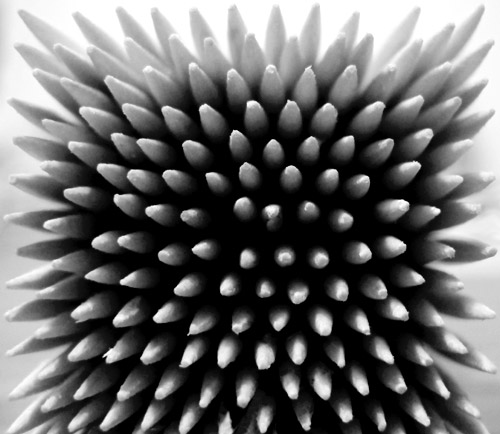
• Coming and Going •
Sometimes having a symmetrical placement works.
Click image to view large
• Coming and Going • By Netkonnexion on Flickr ![]()
Don’t let the rules overwhelm you.
Sometimes the picture you make should flaunt the rules if you have a good reason. An image makes the grade when it catches the eye and draws you into the picture. It is the photographers job to get the viewer interested… not to follow the ‘rules’ of composition. Most of the time the “rule of thirds” works. But getting past that does requires something else to draw the eye into the picture.
Symmetry encourages symmetry
One of the interesting things about symmetry is that when it really exists it draws us right in. Circles and other regular shapes are very attractive to us. Symmetrical faces and other symmetrical objects hold our fascination too. So when we can create a truly symmetrical scene it actually helps to centre the subject. In my photograph above the piece of art in the case and the placement of the case screamed for a symmetrical placement. In fact the comings and goings of the public in the gallery created the imbalance in the symmetry. That simply added interest around the central placement of the art – which itself has an interesting symmetry.
So, while a symmetrical shape encourages a symmetrical placement of the subject even that “rule” can be broken by introducing imbalance to break the background symmetry.
Two lessons
The simple lesson is that a truly symmetrical subject can be centrally placed to encourage symmetry throughout the picture.
The other lesson is, “don’t be trapped in the rule of thirds”. That rule is a great benefit to us. However, as your artistic eye develops you can find some ways to capture the eye with other compositional ploys.
Photokonnexion Photographic Glossary – Definitions and articles.
Composition
rule of thirds







